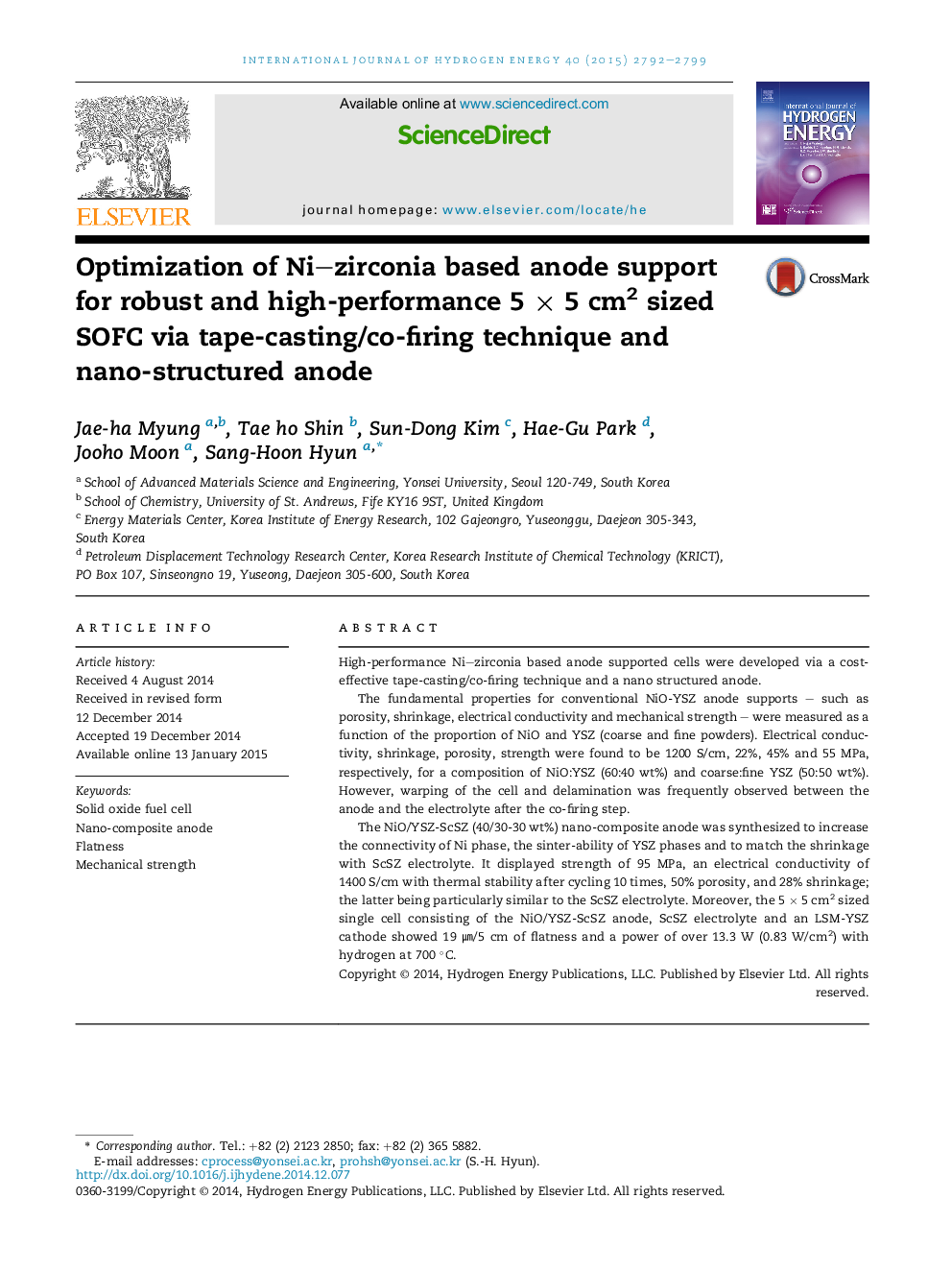| Article ID | Journal | Published Year | Pages | File Type |
|---|---|---|---|---|
| 1270044 | International Journal of Hydrogen Energy | 2015 | 8 Pages |
•The single cells were fabricated by using tape-casting/co-firing technique and nano-structured anode.•The flatness of 5 × 5 cm2 NiO/YSZ-ScSZ anode supported ScSZ electrolyte was 19 μm/5 cm.•The 5 × 5 cm2 sized NiO/YSZ-ScSZ cell showed 13.3 W (0.83 W/cm2) with H2 at 700 °C.
High-performance Ni–zirconia based anode supported cells were developed via a cost-effective tape-casting/co-firing technique and a nano structured anode.The fundamental properties for conventional NiO-YSZ anode supports – such as porosity, shrinkage, electrical conductivity and mechanical strength – were measured as a function of the proportion of NiO and YSZ (coarse and fine powders). Electrical conductivity, shrinkage, porosity, strength were found to be 1200 S/cm, 22%, 45% and 55 MPa, respectively, for a composition of NiO:YSZ (60:40 wt%) and coarse:fine YSZ (50:50 wt%). However, warping of the cell and delamination was frequently observed between the anode and the electrolyte after the co-firing step.The NiO/YSZ-ScSZ (40/30-30 wt%) nano-composite anode was synthesized to increase the connectivity of Ni phase, the sinter-ability of YSZ phases and to match the shrinkage with ScSZ electrolyte. It displayed strength of 95 MPa, an electrical conductivity of 1400 S/cm with thermal stability after cycling 10 times, 50% porosity, and 28% shrinkage; the latter being particularly similar to the ScSZ electrolyte. Moreover, the 5 × 5 cm2 sized single cell consisting of the NiO/YSZ-ScSZ anode, ScSZ electrolyte and an LSM-YSZ cathode showed 19 ㎛/5 cm of flatness and a power of over 13.3 W (0.83 W/cm2) with hydrogen at 700 °C.
